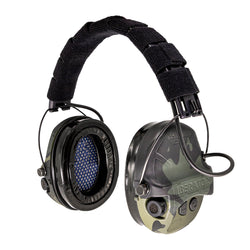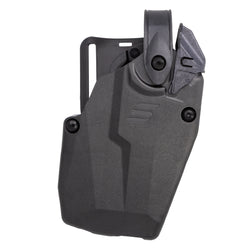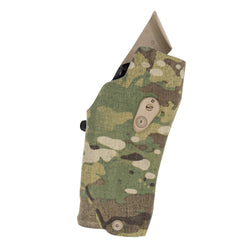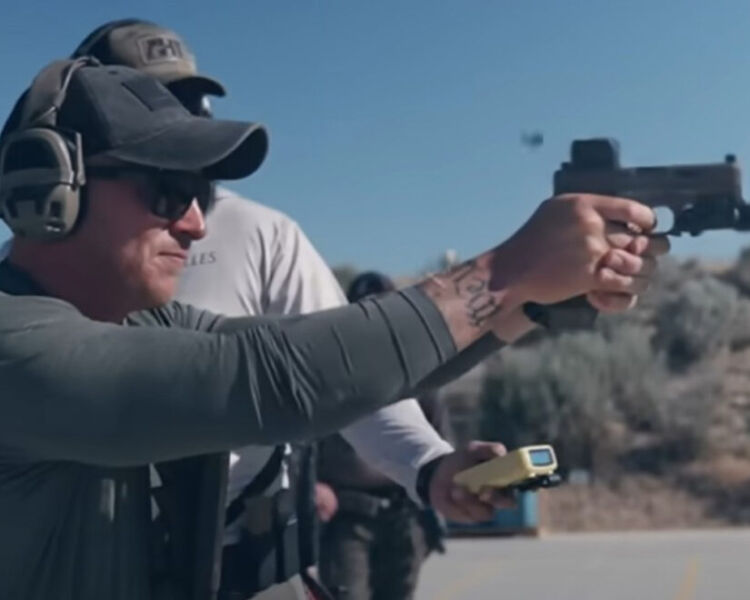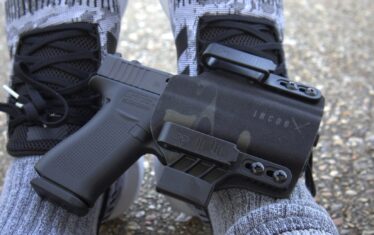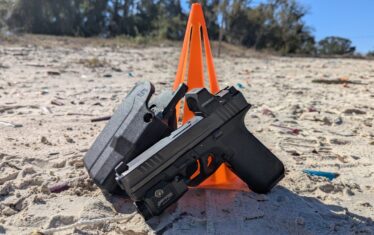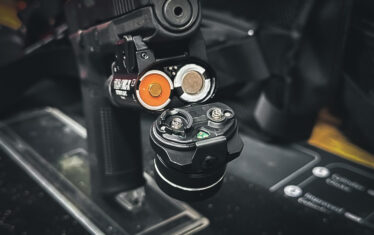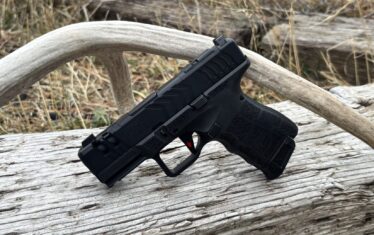In the world of tactical shooting, speed and efficiency can make all the difference. The Transition D.O.P.E. Drill, demonstrated in the video below, offers a rigorous training method designed to improve your transition from rifle to pistol, regardless of your current skill set.
This drill isn’t just about shooting; it’s about making the most of every movement, minimizing downtime, and making every second count.
I had never heard of the D.O.P.E. Drill until I attended one of Rick Crawley’s classes with Achilles Heel Tactical. Since taking the class, this drill has become my go-to drill for balancing speed and accuracy. But there is another element to shooting besides the speed at which you shoot and how accurate you are while doing so. It’s the speed at which you transition from one weapon to another.
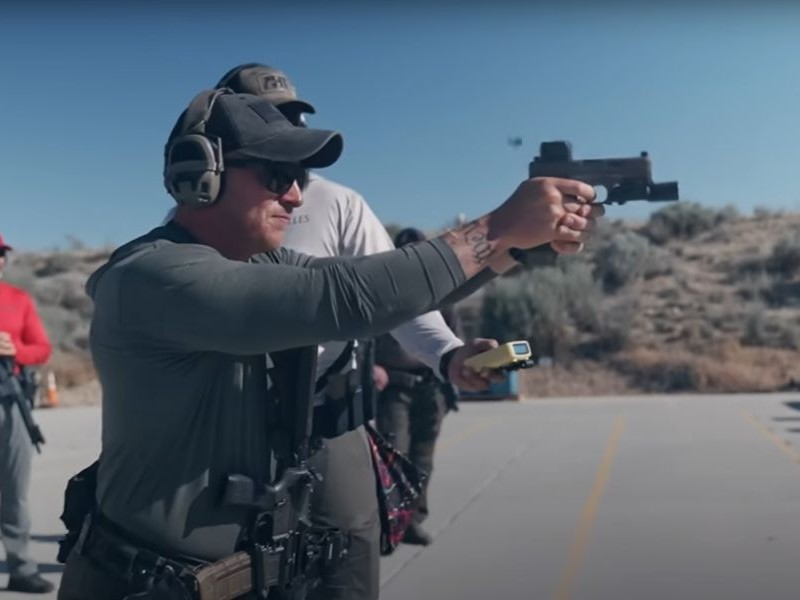
If you are carrying a rifle, that should be your primary weapon. But what happens when it fails to fire, or you run out of ammo while you are actively shooting? You transition to your sidearm.
While reloading your rifle is ideal in most cases, you can transition to a sidearm faster than you can reload a rifle. At least that’s the case for most of us.
When using the D.O.P.E. Drill transition, you combine transitioning into your speed and accuracy.
What is the Transition D.O.P.E. Drill?
The drill is ingeniously simple yet highly effective. It exposes our inefficiencies as shooters during transitions. Here’s how it’s set up and executed:
- Rifle Ready: The shooter begins with a rifle that has one round in the chamber and an empty magazine. The rifle is held at a “low cover” position, aimed at the base of the target.
- Rifle Engagement: On command, the shooter quickly brings the rifle up and fires the single round at center mass.
- Pistol Transition: Immediately after the rifle shot, the shooter transitions to their pistol and fires five rounds into the target.
The idea is to force a quick rifle-to-pistol switch under pressure. This simulates a scenario where a rifle might run dry or malfunction, requiring an immediate secondary weapon response.
Achilles Heel Tactical also provides their own targets that have outlines of the organs in the body. This helps you understand why a perfect hole in the center of the target is not necessary. Your shots need to count and be effective, which means the lungs, heart, etc., are all vital areas.
Why is the Transition D.O.P.E. Drill important?
In the video, Rick Crawley explains that in real-world, high-stakes situations, a slow transition can be a matter of life and death. He uses the example of a SWAT team member making a slow transition. This can potentially endanger the entire team, not just the individual.
As he points out, the transition time is often the biggest time sink in such scenarios. Modern holsters have multiple retention levels, so being familiar with your holster is an important step before you start this training.

The drill forces you to confront and improve your transition speed. At the beginning of the video, Crawley demonstrates the drill to the students. He does this routinely at all of his training events, which I like. He doesn’t ask you to do something he doesn’t do first.
His run on the drill showed the rifle shot was 0.26 seconds with a transition time of 1.02 seconds. This shows students in the class that such a quick transition is possible.
The varying times of other shooters in the video ranged from a little over 2 seconds to 4 seconds. A few seconds sound fast, but when you think about an active incident, a few seconds is a long time.
One of the best drills for weapon transitions
There are plenty of drills out there designed to improve your transition speed. Many of those drills are great, and I’ve used a lot of them. But the D.O.P.E. drill is designed to provide a specific “hit factor” number that tells you how well you are doing. It’s not just how fast, it’s a combination of how fast and how accurate.

In a past article, I discussed the challenges of balancing speed and accuracy. The D.O.P.E scoring system solves this problem. If you shoot too fast but are not as accurate, your score is low. If you shoot a perfect bullseye but are slower, your score is low. The only way to get a good score is to have a good combination of speed and effective accuracy.
This type of drill naturally puts some pressure on the shooter as they are trying to be fast and accurate at the same time. This isn’t normally a good combination for shooters. When you add in a transition from rifle to handgun, it only increases the level of pressure.
If you haven’t yet, it’s time to try the Transition D.O.P.E. Drill
It doesn’t matter if you carry a gun for a living or use one for self-defense. If you own firearms, you should train. For some, this may be a pistol only. That’s ok, and you can still run the D.O.P.E. Drill with just a pistol.
But for those who own a rifle and a handgun, it’s hard to find a drill that is more effective at determining your proficiency. When you combine transitions into this drill, you are layering important skills into one drill.
Here are some of the takeaway points from Rick Crawley in his video “Transition D.O.P.E. Drill.”
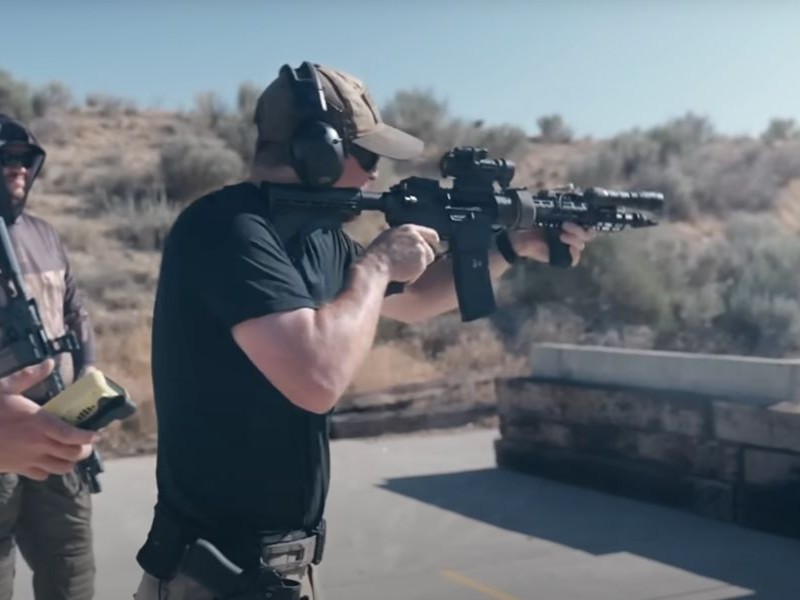
- Transition is King: The video repeatedly stresses that the time lost during the transition from rifle to pistol is often far greater than the time spent on the initial rifle shot itself. Focus on a smooth, swift transition. And remember, when it comes to speed, smooth motions are the key.
- Speed vs. Precision (Initial Rifle Shot): Crawley questions whether spending extra time on a “perfect” rifle shot is always worth it. If it significantly delays the overall engagement due to a slow transition, it probably isn’t. The goal is to be fast and effective, not a perfect bullseye shot.
- Performance Metrics: The concept of “hit factor” (points divided by time) is a valuable way to measure overall performance. It balances both accuracy and speed.
The “Transition D.O.P.E. Drill” is a great drill to help you improve your transition skills. It’s a reminder that true proficiency isn’t just about hitting the target, but about doing so with speed and effectiveness in dynamic environments.


